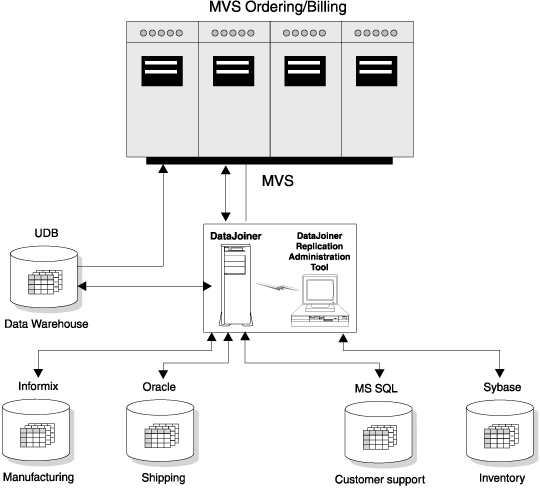

DJRA is one of two replication administration interfaces that automate many replication activities. From DJRA, you can select your source tables and prepare them for change capture, create your target tables, and create the control information for the Apply program. The control information causes the Apply program to copy data from the selected source tables to the selected target tables. You can also use DJRA to browse or change replication definitions.
DJRA, working with DB2 DataJoiner, the Capture program, Capture triggers, and the Apply program, replicates relational data from a variety of sources to a variety of targets. The databases that DJRA supports as sources or targets are:
You can use DB2 DataJoiner with IBM Replication to access data from non-IBM databases and replicate data from any database in your enterprise to any other, as shown in Figure 19. You can also tailor or enhance data as it is copied, thus delivering detailed, divided, summarized, or derived data when and where it is needed.
Figure 19. DB2 DataJoiner with IBM Replication Scenario
 |
DJRA provides objects and actions that define and manage source and target table definitions. Working through DB2 DataJoiner, DJRA creates:
The Apply program then reads from and writes to DB2 DataJoiner nicknames, eliminating the need to connect explicitly to non-IBM databases.
If the source database is a DB2 database, the Capture program for that database captures the changes, therefore, the Capture triggers and DB2 DataJoiner are not involved. If the target database is a DB2 database, the Apply program writes the changed data to the DB2 target database directly and DB2 DataJoiner is not involved.